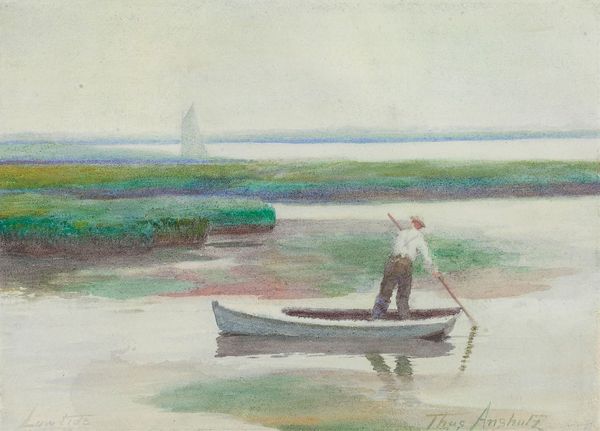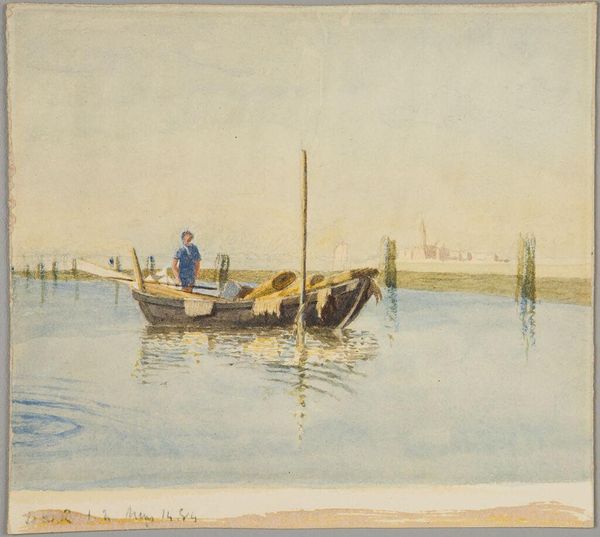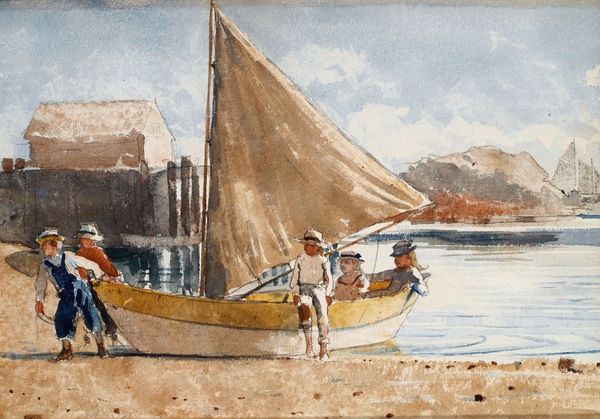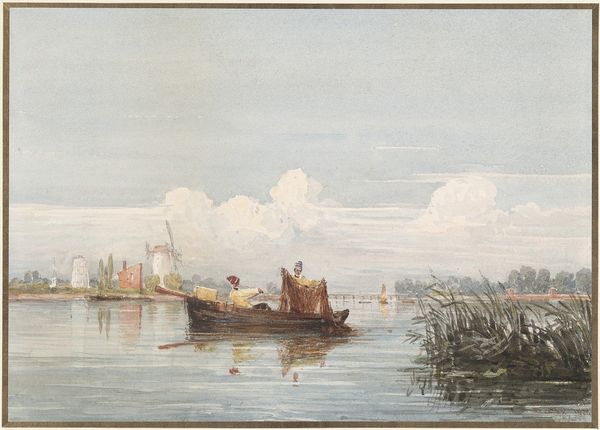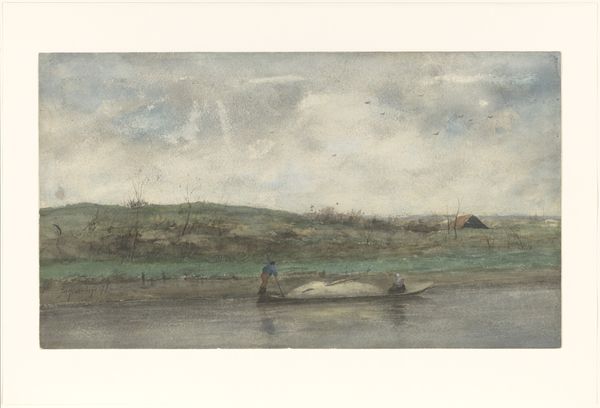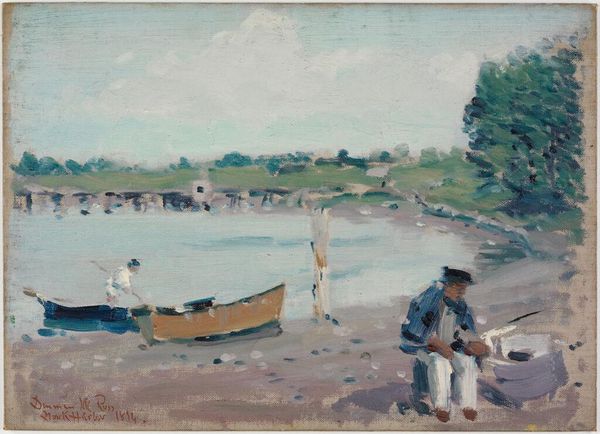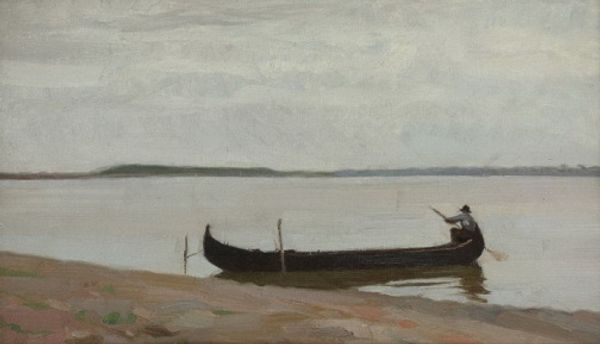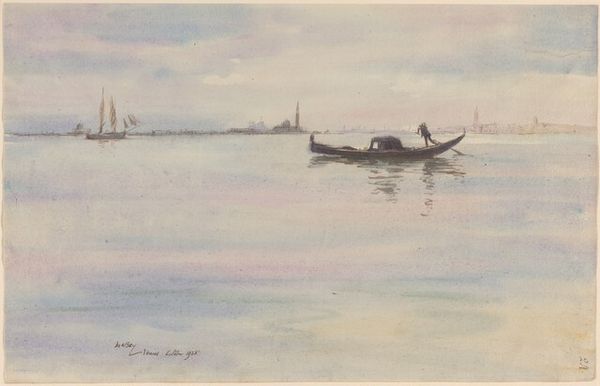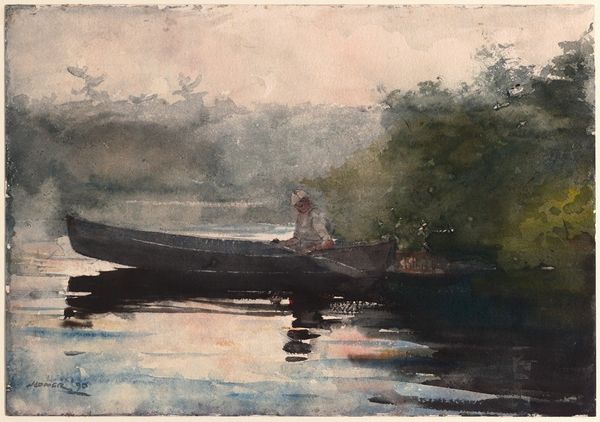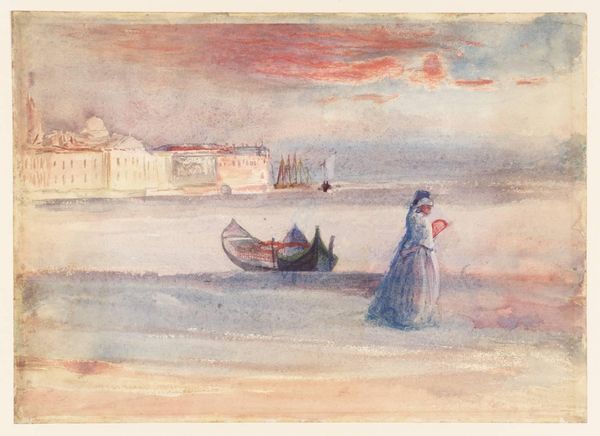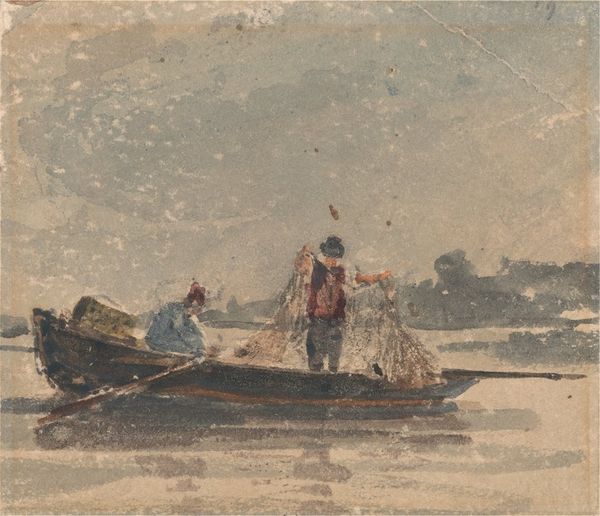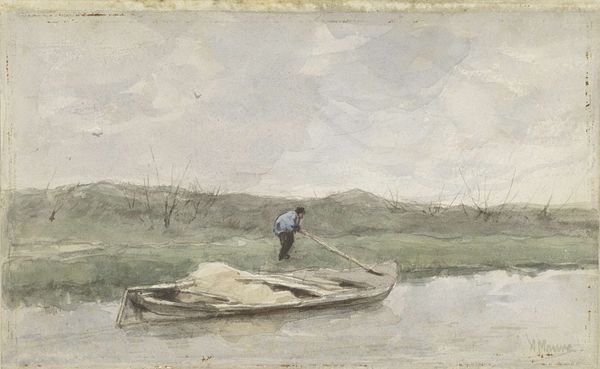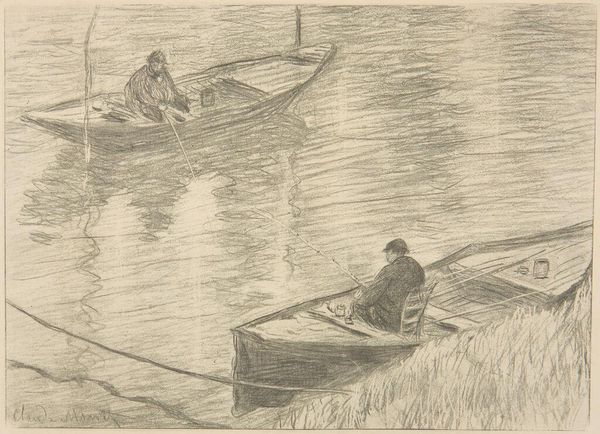
Copyright: Public Domain: Artvee
Editor: Winslow Homer's "Spearing Eels," dating from the late 19th century and done in watercolor, feels incredibly still and quiet. It’s like a memory captured in shades of grey and subtle browns. What do you see in this piece? Curator: The image certainly resonates with the stillness you observed, but consider the activity depicted. Spearing eels is not passive, is it? Think of the symbolic weight of the eel. It's a liminal creature, living between the fresh and salt water, a potent image of transition. The figure, centered in the boat, almost a unification of man and nature. Editor: That's a really interesting perspective. I hadn’t considered the eel itself as symbolic, but it makes sense with its amphibious nature. Do you think the grey and muted tones play into this symbolic representation of transition, and the idea of 'in-betweenness'? Curator: Precisely. Homer seems less interested in precise details. Look at how the reflections become as important as the objects creating them! The barrel and the figure’s hat—the cultural markers almost mirrored as much as they’re presented directly. Do you see how that technique invokes both cultural memory and its dissolving, impermanence? Editor: Absolutely! It creates a sense of fading, or history just beneath the surface. So the scene itself, seemingly simple, is actually loaded with meaning about cultural identity and the passage of time. I'll never look at a watercolor the same way again. Curator: That's the wonderful thing about delving into the symbolic power of art. Hopefully now others will too!
Comments
No comments
Be the first to comment and join the conversation on the ultimate creative platform.
